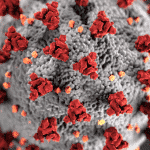Tools to prevent cervical cancer
More than 13,000 women in the United States are diagnosed with invasive cervical cancer each year. However, cervical cancer is preventable and, if detected early, treatable.
How do you prevent cervical cancer?

One way to help prevent cervical cancer and HPV is vaccination. HPV vaccines can help prevent infection from both high-risk HPV types that can lead to cervical cancer and low-risk types that cause genital warts.
The CDC recommends that at age 11 or 12, all boys and girls receive the HPV vaccine. Vaccinating at the preteen age is more effective because the vaccine produces a stronger immune response, so preteens only need two doses of the vaccine. For people 15 and older, a full three-dose series of the vaccine. For people 15 and older, a full three-dose series of vaccines is needed.
Since cervical cancer often does not cause any pain, another way to help prevent or treat early stages of cervical cancer is regular testing. It is important for women to get regular Pap smears to check for abnormalities. A Pap smear looks at cells from the cervix for abnormalities that can become cervical cancer if not treated.
Another test, the HPV test, finds the virus and helps healthcare providers know which women are at the highest risk of cervical cancer. Both Pap and HPV tests are recommended for women over 30.
Since January is Cervical Health Awareness Month, take this opportunity to your doctor about when you should schedule your Pap smear, and how often you should be tested.






